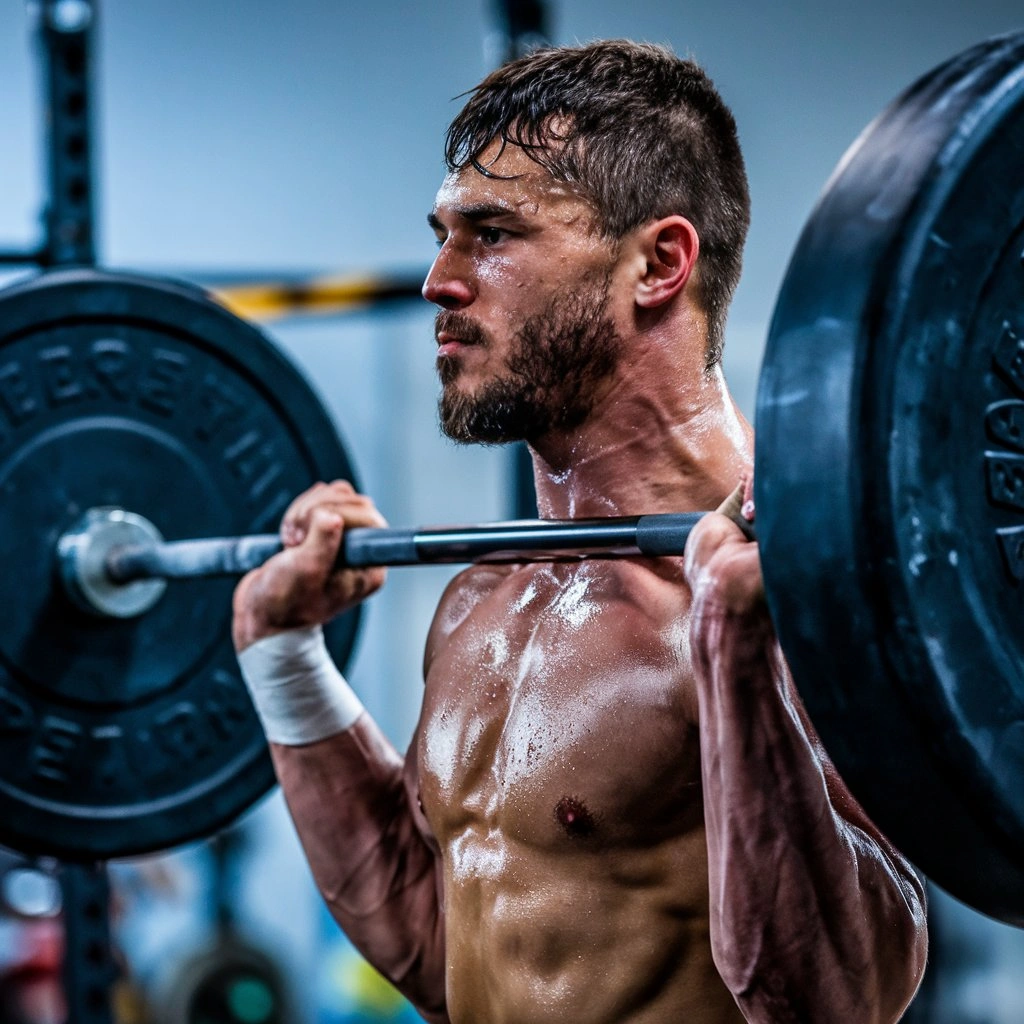Gearing Up for Greatness: What are Football Barbells?
Imagine a barbell, the weightlifting kind, but with a twist! Football barbells have handles that curve inwards. They are also called Swiss bars or neutral grip barbells. This might seem like a small change, but it makes a big difference. Standard barbells force your hands into a straight grip. This can stress your shoulders.
Football Barbells allow for a natural grip. It’s easier on your joints. Think of it like this: your arms hang by your sides, right? Football barbells mimic that position, making lifting more comfortable.
Building a Stronger You: Why Strength Training Matters in Football
Football isn’t about fancy footwork and quick throws. It’s a full-body battle that demands strength, power, and endurance. Here’s why strength training is a secret weapon for any football player:
- Power up Your Hits: Strong muscles help you make powerful tackles and blocks. Imagine pushing through someone with all your might. That’s the strength you can build with barbells.
- Become a Running Machine: Strength training doesn’t make you strong. It also improves your running form and explosiveness. Think about sprinting after a catch or dodging defenders – strong legs are key!
- Reduce Injuries: Strong muscles and supportive joints prevent injuries. They keep you on the field longer. Nobody wants to miss the big game because of a pulled muscle!
- Boost Your Confidence: Feeling strong translates to feeling confident on the field. When you know you can push through a tough play, your mental game gets a boost too!
The All-Star of Strength Training: How Football Barbells Help You Reach Your Peak
So, why choose a Football Barbell over a regular one? Here are the benefits that make them a champion’s choice:
- The neutral grip is a Shoulder Savior. It takes the pressure off your shoulders. This makes exercises like bench presses and overhead presses more comfortable. This is especially true if you’ve had injuries before.
- The angled handles allow for deeper motion in some exercises. This can help you build more muscle and improve flexibility.
- Variety is the Spice of Life (and Workouts). Football barbells offer a different challenge than straight barbells. They help you target different muscles and avoid workout plateaus.
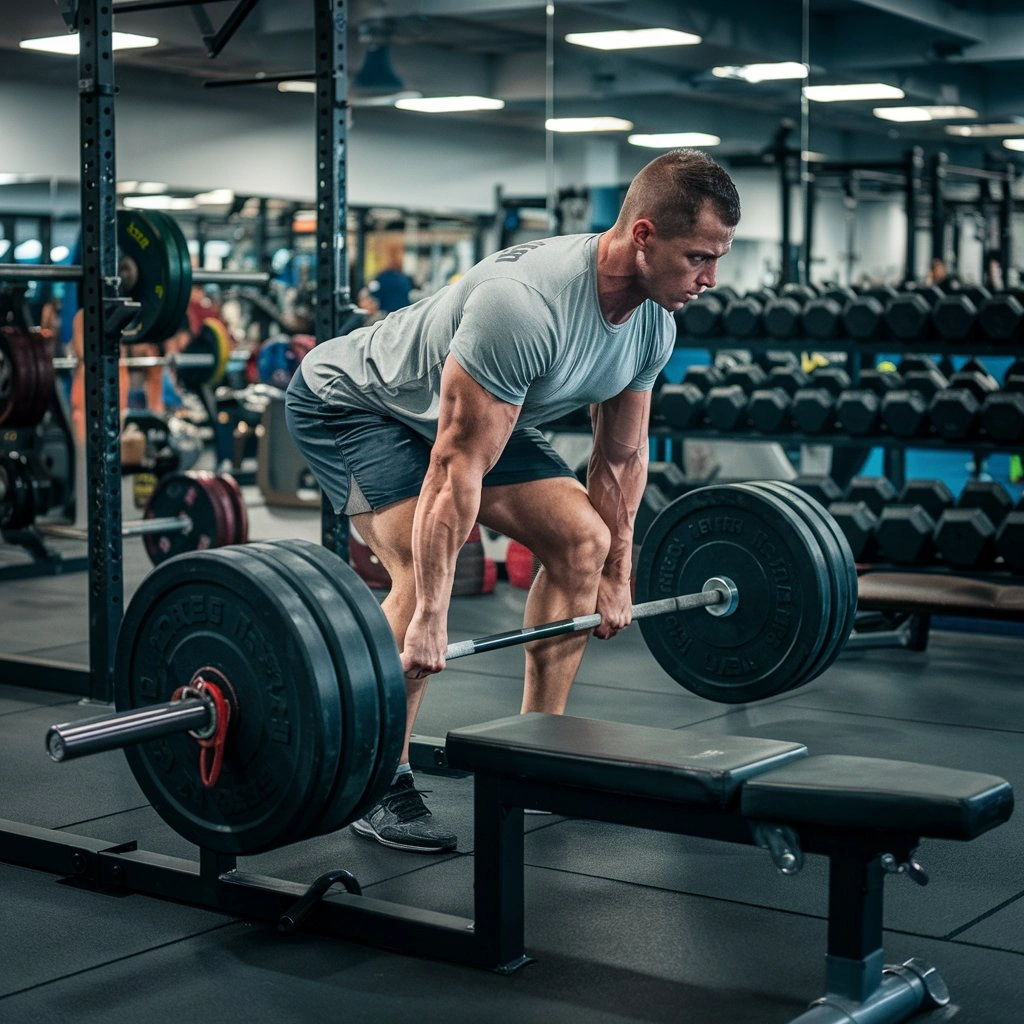 Design and Features of Football Barbells
Design and Features of Football Barbells
Football barbells have a unique design. They are built to help you become a stronger, more versatile player. Let’s delve into the features that make them stand out:
A Champion’s Curve: The Unique Design
Unlike a straight barbell, a football barbell boasts a distinctive curved design. The handles bend inwards at an angle. They mimic the natural position of your arms when hanging by your sides. This minor tweak makes a big difference. It allows for a neutral grip. This puts less stress on your wrists and shoulders than the forced grip of a straight bar. Imagine holding a weight at your side – that’s the neutral grip magic!
Finding the Perfect Fit: Length and Diameter
Football barbells come in a variety of lengths, like regular barbells. The most common lengths range from 6 feet to 8 feet, catering to different exercises and gym spaces. For example, a shorter barbell might be best for bench presses in a home gym. A longer one is better for squats in a bigger weight room.
The diameter of the bar, which is how thick it is, is usually around 28mm (a little over 1 inch). This site offers a secure grip for most athletes. It lets you focus on lifting weights, not on the bar slipping.
Balanced for Success: Weight Distribution and Grip Options
A good football barbell boasts even weight distribution throughout the bar itself. This ensures smooth lifting. It stops the weights from feeling unbalanced as you exercise. Imagine lifting a bar that feels lopsided – not ideal!
Football barbells also shine when it comes to grip options. Many models have knurled grips. They are tiny raised lines along the whole length of the bar and on the angled handles. This textured surface provides a firm hold, even with sweaty hands. Some barbells might even have marks on the handles. They help you position your hands for different exercises.
Built to Last: Durability and Material Composition
Football barbell manufacturers build them to endure tough workouts. They’re constructed from high-quality steel or a combination of steel and chrome. This ensures the bar can handle heavy weights without bending or warping. Think of it as a reliable teammate. You can always count on it to support you through the toughest lifts.
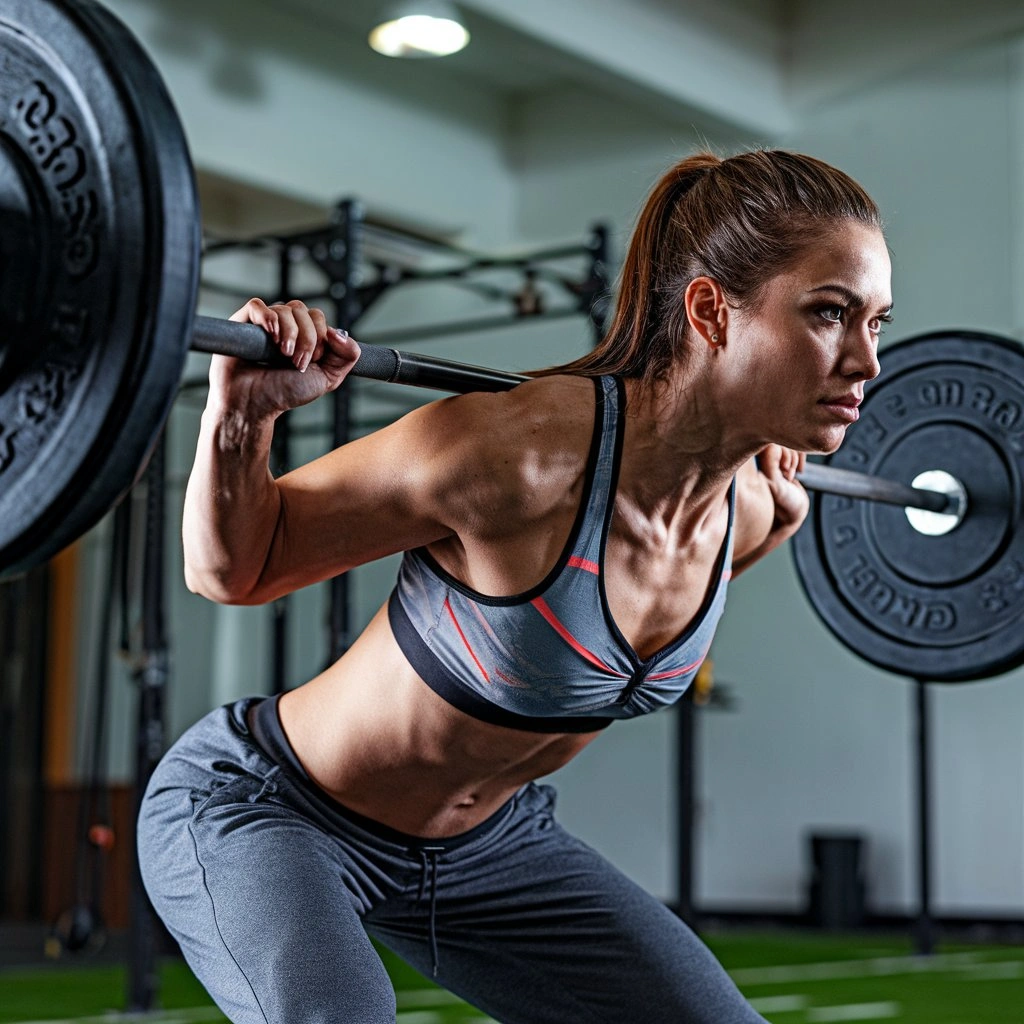 Benefits of Using Football Barbells
Benefits of Using Football Barbells
Football barbells aren’t about comfort. They offer many benefits that can improve your game. Let’s explore how these new barbells can make you stronger. They can also make you a more well-rounded athlete.
Mastering the Moves: Enhancing Football-Specific Movements
Football requires a unique blend of strength, power, and control. The angled handles of football barbells allow for a more natural movement. Athletes use them in exercises that mimic on-field actions. Here’s how they shine:
- Throwing Power: Exercises, such as neutral grip overhead presses, target the muscles. These are the muscles used in throwing a football. They improve your throwing power and accuracy.
- Explosive Running: Exercises like neutral grip squats and lunges use the muscles. These muscles are responsible for fast sprints and sharp cuts on the field.
- Tackling Prowess: Exercises like neutral grip rows and presses strengthen the core. They also strengthen the upper body muscles. Players use these for powerful tackles and blocks.
By using football barbells in your training, you’ll build strength. It will directly improve your on-field performance.
Forearm Frenzy: Improving Grip Strength and Forearm Endurance
A strong grip is essential for football players. Football barbells have unique grip options. They can help you develop a vice-like hold. The knurled texture along the handles provides excellent traction, even with sweaty hands. This translates to better control of the ball during catches, jukes, and tackles.
Also, football barbell exercises need more forearm engagement. This is compared to straight barbell exercises. This extra activation helps build forearm endurance. It is crucial for keeping a strong grip throughout a game.
Targeting the Right Muscles: Building Football-Specific Strength
Football demands strength in a variety of muscle groups. Football barbells excel at targeting these key areas:
- Neutral grip presses target the chest, shoulders, and triceps well. These muscles are essential for throwing power and upper body strength.
- Exercises like neutral grip rows and presses strengthen the core and back muscles. These muscles are crucial for stability and explosiveness on the field.
- Squats, lunges, and deadlifts with a football barbell target the legs and hips. They lay the foundation for powerful running, jumping, and changing direction.
Focus on these muscle groups with football barbells. You’ll build a balanced strength profile. It will improve your performance for the demands of football.
A Shield Against Injury: Reduced Risk of Injuries Through Balanced Strength Development
Normal barbells can stress your shoulders. This is due to the forced grip. Football barbells have a neutral grip. They reduce stress, so they are safer for many athletes. This can help reduce the risk of shoulder injuries, a common concern for football players.
Also, barbell football can improve posture and stability. It builds core and upper body strength. This reduces the risk of injuries throughout the body that can sideline you from the game.
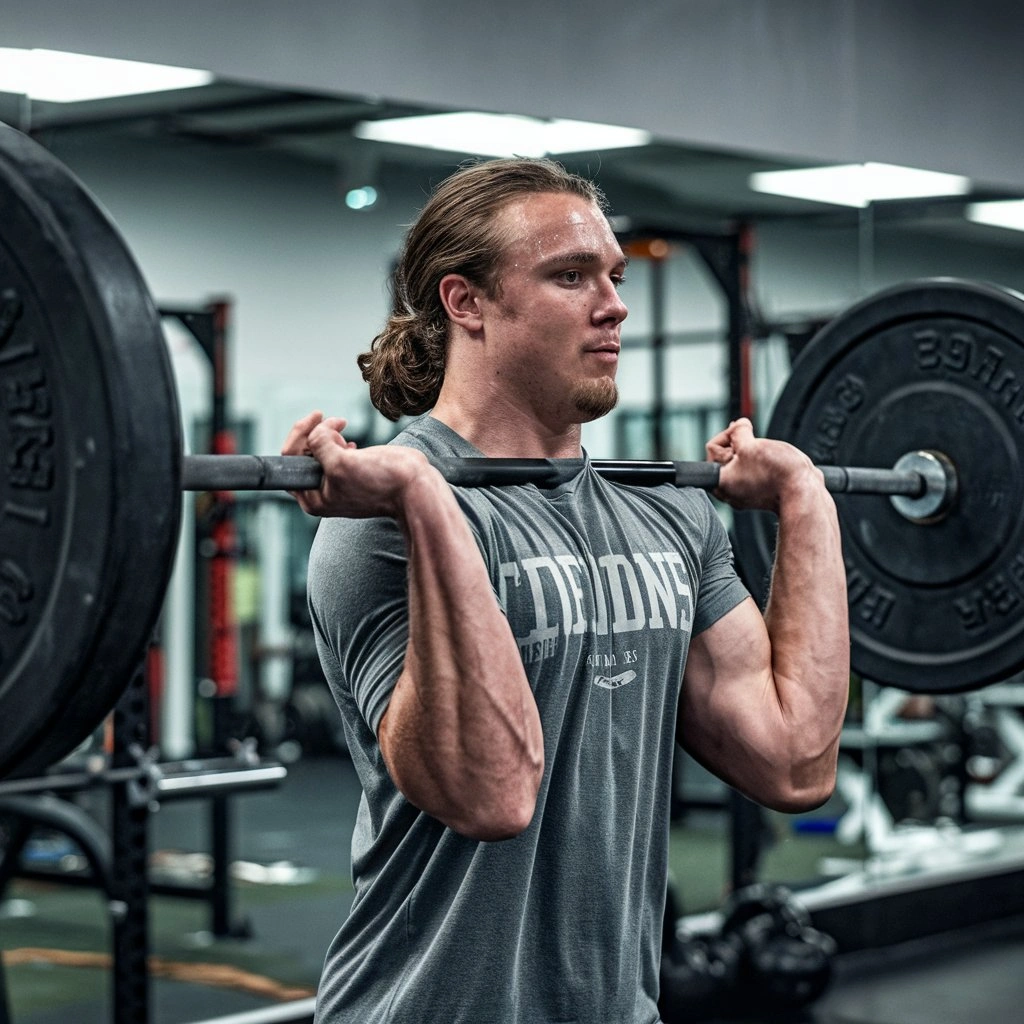 Football Barbells Exercises
Football Barbells Exercises
Football barbells aren’t fancy equipment. They’re a gateway to unlocking your full potential as a player. Here’s a breakdown of exercises that’ll transform you into a dominant force on the field:
Building a Strong Foundation: Squat Variations
Squats are the king of lower body exercises, and football barbells can elevate them to a whole new level. Here are some variations to target different muscle groups:
- Back Squat: The back squat is a classic squat. It uses a football barbell and strengthens your quads, glutes, and hamstrings. This translates to explosive sprints, powerful jumps, and rock-solid tackling form.
- Front Squat: The front squat is done by holding the barbell across your shoulders with a neutral grip. It strengthens your core and quads. It also improves balance and stability. Think about maintaining good posture while breaking through tackles.
Powerhouse for the Lower Body: Deadlift Variations
Deadlifts are another essential exercise for building strength. Football barbells offer a comfortable and effective way to perform them:
- Conventional Deadlift: This is the conventional deadlift. It uses a football barbell. It builds your whole backside and core. These muscles are key for strong leg drive and explosive tackling.
- Romanian Deadlift: The Romanian Deadlift focuses on your hamstrings and glutes. It improves hip mobility and acceleration on the field.
Throwing Power on Display: Overhead Press Variations
The football barbell has a neutral grip. It makes overhead presses a dream for shoulder health and throwing power.
- The neutral grip overhead press targets the shoulders, triceps, and core. It mimics the throwing motion and builds upper body strength for explosive throws.
- The push press starts with a slight leg drive. It builds explosive power transfer from your legs to your upper body. This mimics the throwing motion and adds an extra layer of power.
Core Control is King: Core Exercises
A strong core is the foundation for all athletic movements. Football barbells can be incorporated into core exercises for added challenge:
- Neutral Grip Rollout: Do a neutral grip rollout with the football barbell. It engages your abs and obliques. This builds superior core stability and control.
- Paloff Press: The Paloff Press is done with a football barbell. It challenges your core rotation and stability. These are crucial for keeping balance during tackles and jukes.
Blurring the Lines: Functional Movements Mimicking Football Actions
Football barbells shine when it comes to exercises that mimic real-life football movements:
- Zercher Squat: The Zercher Squat involves holding the barbell in the crook of your arms. It strengthens your core and legs. It mimics the low body position in power cleans, a key strength exercise for football players.
- Med Ball Throws with Football Barbell Squats: Do med ball throws. Also, do football barbell squats. This combo engages your whole body in a coordinated movement. It mimics throwing a football while on the move.
Training Program Incorporating Football Barbells
Football barbells are your gateway to a stronger, more explosive you. Here’s a sample training program incorporating them, designed to elevate your game:
Gearing Up for Greatness: The Warm-up Routine (10-15 minutes)
Don’t underestimate the warm-up! It primes your body for exercise and reduces the risk of injury. Here’s a simple yet effective routine:
- Light Cardio: 5-minute jog or jump rope to get your blood flowing and muscles warm.
- Dynamic Stretches: Do dynamic stretches. These include leg swings, arm circles, and lunges with twists. They increase your range of motion and prepare your joints for lifting.
- Foam Rolling (optional): Foam Rolling (optional). Use a foam roller to target tight muscles. It can improve mobility.
Building Your Beast Mode: Main Strength Training Exercises (45-60 minutes)
This program focuses on compound exercises. They target many muscle groups at once for maximum efficiency. Perform each exercise with proper form and a controlled tempo:
- Back Squat (3 sets of 8-12 reps): Build a strong foundation for powerful running and tackling.
- Neutral Grip Overhead Press (3 sets of 6-8 reps): This exercise is the Neutral Grip Overhead Press. Do 3 sets of 6-8 reps. It builds explosive throwing power and upper body strength.
- Neutral Grip Row (3 sets of 10-12 reps): Do 3 sets of 10-12 reps of Neutral Grip Row. They strengthen your back and core. This helps with stability and powerful tackles.
- Zercher Squat (optional, 2 sets of 6-8 reps): Mimic the low body position in power cleans. They also build core and leg strength.
Finding Your Rhythm: Reps, Sets, and Rest Intervals
Reps are the number of times you do an exercise. Sets are the number of times you repeat a group of reps, with a rest between. Here’s a breakdown for this program:
- Reps: This program focuses on a range of 6-12 reps per set. Lower reps with heavy weights build strength. Higher reps with light weights grow muscles and build endurance.
- Sets: Perform 3 sets for each exercise, allowing your body to recover between sets.
- Rest Intervals: Rest for 60-90 seconds between sets of compound exercises. Rest for 30-45 seconds for isolation exercises (if included).
Continuous Improvement: Progression and Periodization Strategies
As you get stronger, it’s crucial to keep challenging your muscles. Here are some strategies to ensure continuous progress:
- Progressive Overload: Progressive Overload means gradually increasing the weight you lift. Do this by adding more weight to the barbell or by doing more reps/sets.
- Periodization: Break down your training into phases with specific goals. For example, a strength phase might use lower reps with heavy weights. It would be followed by a hypertrophy phase with higher reps and lighter weights. pen_spark
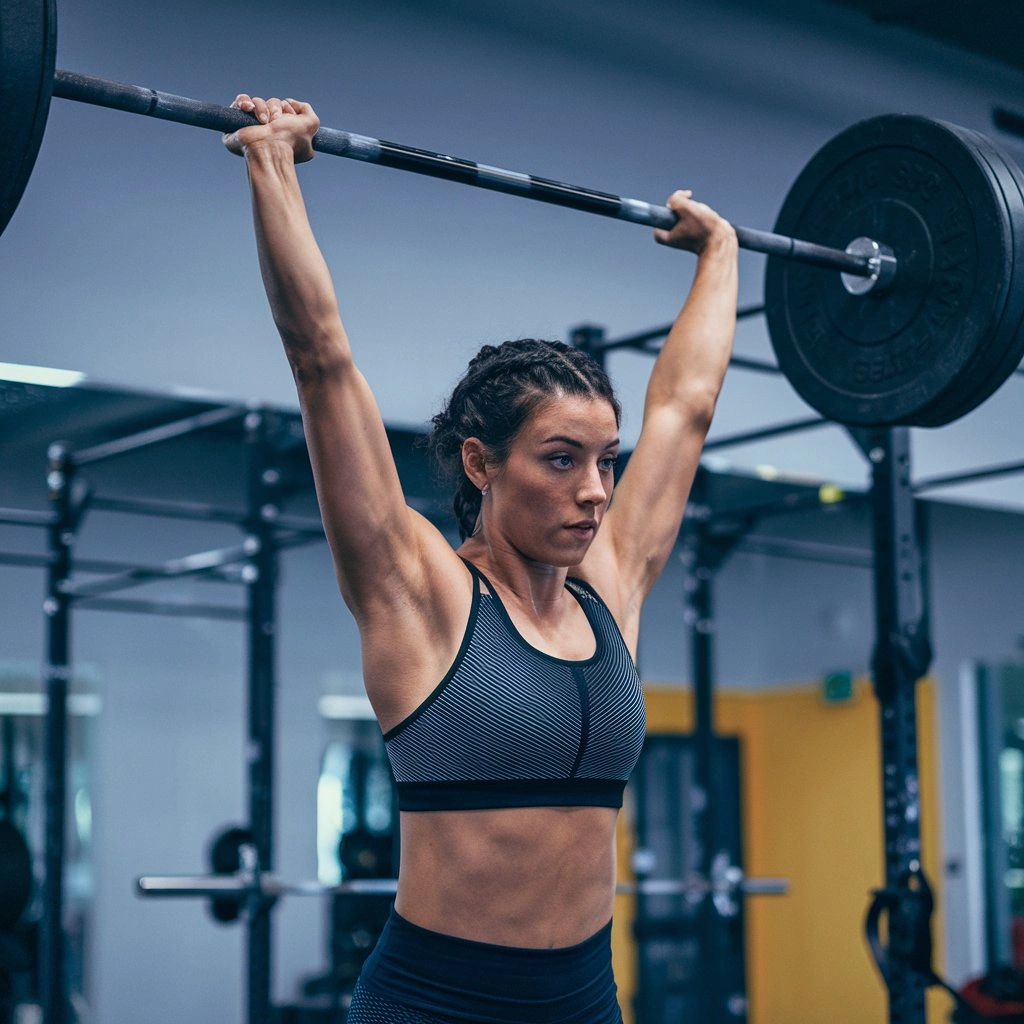 Safety Considerations
Safety Considerations
Football barbells are great for building strength. But, you should always prioritize safety. Here are some key considerations to keep you healthy and injury-free:
Mastering the Moves: Proper Form and Technique
Football barbells are magic. They promote a natural grip and may reduce shoulder stress. But, proper form is still crucial for maximizing benefits and minimizing risks. Here are some tips:
- Start Light: Start with light weights. Gradually increase them as your technique improves. This allows you to focus on form without compromising your safety.
- Mirror, Mirror on the Wall: Use a mirror to check your form from different angles. Ask a trainer or a friend to observe your technique and provide feedback.
- Maintain a Neutral Spine: Keep your back straight and core engaged. Avoid rounding your back, which can put a strain on your spine.
- Full Range of Motion: Aim for a controlled and complete range of motion with each exercise. Don’t force movements beyond your natural range.
- Don’t Forget Your Breath: Breathe out as you lift. Breathe in as you return.
Buddy Up: Use of Spotters for Heavy Lifts
There’s no shame in asking for help! This is especially true when lifting heavy weights. It’s the case for exercises where you can’t bail out, like squats. Having a spotter is essential.
A spotter can assist you by
- Providing physical support: They can help you lift the bar off the rack. They can guide it back after the reps.
- Monitoring your form: They can ensure you’re maintaining proper technique throughout the exercise.
- Motivating you: A good spotter can motivate you. They can encourage you to push your limits effectively.
Slow and Steady Wins the Race: Gradual Progression to Heavier Weights
It’s tempting to jump straight to the heaviest weights, but resist the urge! Start with lighter weights and increase them over time. This allows your muscles and joints to adapt to the stress of lifting weights. It reduces the risk of injuries.
Here are some signs you might be progressing too quickly
- Pain: Pain during or after an exercise is a red flag. Stop the exercise and consult a doctor if the pain persists.
- Decreased Form: As the weight gets heavier, your form might start to suffer. If you can’t maintain proper form, reduce the weight or take a break.
- Fatigue: Feeling tired after a workout could state overtraining. Schedule rest days and allow your body to recover.
Listen to Your Body: Avoiding Overtraining
Pushing yourself is vital for growth. But, there’s a fine line between dedication and overtraining. Pay attention to your body’s signals to avoid injury and burnout:
- Take Rest Days: Give your muscles time to recover between workouts. Aim for at least 1-2 rest days per week.
- Prioritize Sleep: Adequate sleep allows your body to repair and rebuild muscle tissue. Aim for 7-8 hours of sleep per night.
- Listen to Your Limits: Don’t push yourself through pain or exhaustion. Take a break if you feel fatigued or sore.
Conclusion
Football barbells are more than a variation of a classic weightlifting tool. They are a game-changer for football players. The players use them to boost their performance and dominate on the field.
A Champion’s Arsenal: Recap of Football Barbells’ Benefits
Let’s revisit the reasons why football barbells deserve a prominent spot in your training arsenal:
- Shoulder Savior: The neutral grip reduces stress on your shoulders, making them a safer option compared to traditional barbells, especially if you’ve had injuries before.
- Strength & Powerhouse: Football barbells allow you to target key muscle groups, building strength and explosiveness for powerful throws, tackles, and breakaway runs.
- Improved Grip & Core: The knurled grips and exercises that engage your core translate to a firm hold on the ball and better overall stability.
- Reduced Injury Risk: Balanced strength development and a potentially safer grip position can help minimize the risk of injuries that sideline you from the game.
- Functional Movements: Exercises with football barbells can mimic real-life football actions, improving your on-field performance.
Football barbells offer a unique blend of comfort, safety, and performance benefits. They’re not a magic bullet, but a powerful tool to add to your training regimen.
Unleash Your Inner Beast: Encouragement for Football Players
Are you ready to take your game to the next level? Football barbells can be your secret weapon for building strength, improving explosiveness, and reducing your risk of injuries.
Here’s the call to action:
- Embrace the Change: Don’t be afraid to experiment with football barbells. You might be surprised by the comfort and effectiveness they offer.
- Seek Guidance: Talk to a certified trainer to learn proper techniques and create a personalized training program tailored to your goals.
- Fuel Your Journey: Remember, proper nutrition and adequate rest are crucial for optimal results and injury prevention.
Safety First, Always: Importance of Proper Technique and Safety Precautions
Remember, maximizing your potential goes hand in hand with prioritizing safety. Here’s a final reminder:
- Master the Moves: Focus on proper form and technique to ensure you’re reaping the benefits of football barbells without putting yourself at risk.
- Listen to Your Body: Don’t push yourself through pain or exhaustion. Take rest days and prioritize sleep for optimal recovery.
- Don’t Go It Alone: Utilize spotters for heavy lifts and seek guidance from a trainer for personalized coaching.
By incorporating football barbells into your training program with a focus on safety and proper technique, you’ll be well on your way to becoming a dominant force on the field. So, grab your football barbell, embrace the challenge, and get ready to rewrite your personal best!

